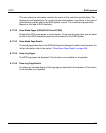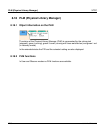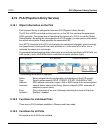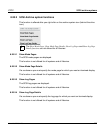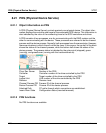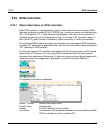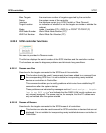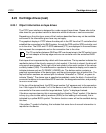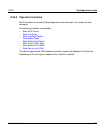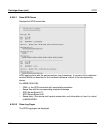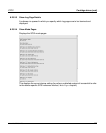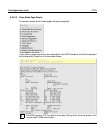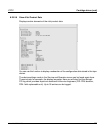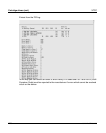
U41117-J-Z125-7-76 423
XTCC Cartridge drives (real)
8.23 Cartridge drives (real)
8.23.1 Object information on tape drives
The XTCC user interface is designed for a wide range of tape drives. Please refer to the
data sheet for your product variant to determine which drives are or can be connected.
Depending on the drive type, some of the functions described here may not be available
and some of the information given here may not apply.
The graphical display in XTCC shows the data path in the IDP from the FC controllers that
establish the connection to the RAID system, through the PDS and the SCSI controller, and
on to the drive. The SCSI and FC-SCSI addresses (CTL) are displayed in the small boxes
that represent the components and on the connection line to the drive.
The FC controllers between RAID and IDP are shown twice in the IDP symbol: once
as host adapter at the top edge and once as controller with the acctached RAID
system.
Each tape drive is represented by a block with three sections. The top section indicates the
read/write status of the drive by means of a lock symbol. If the lock is closed, the drive will
only permit read access. To the right of the lock symbol is the serial number of the volume
currently loaded (VSN). The middle section represents the device’s display, and is used to
indicate statuses such as CU READY, LOADED, etc. The bottom section contains a
graphical representation of the device type, and the archive system icon is behind this. The
top and bottom sections are colored pink to indicate “Unloaded” or “Offline”, or green to
indicate “Ready”. The device type is specified immediately under the block. A colored line
connects the device to its associated SCSI controller, the assigned emulation, and possibly
to one or more hosts.
At the top of the device block, the SCSI target number “tgt” appears next to the connection
line. If the Logical Unit Number “lun” of the device is not 0 or if a device for which this is the
case exists for the same controller target address, “tgt,lun” is displayed instead.
If the drive requires cleaning, this is represented by a flashing “Clean” symbol. If the device
is busy (e.g. due to data security erasures (DSEs) or the loading of microcode), this is
indicated by a yellow BUSY symbol. The device function menu will not be available during
this time.
If the yellow “!” symbol is flashing, this indicates that some form of manual intervention is
required on the device.
i



